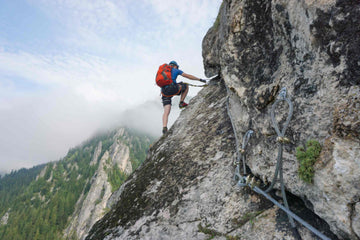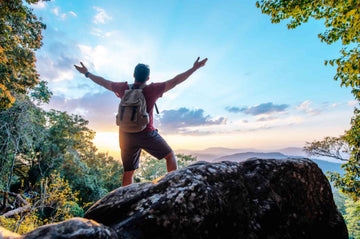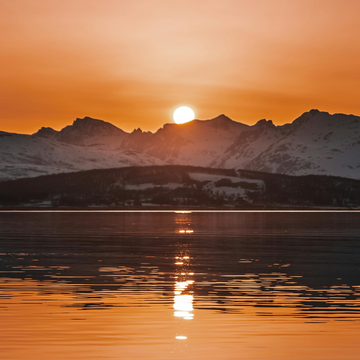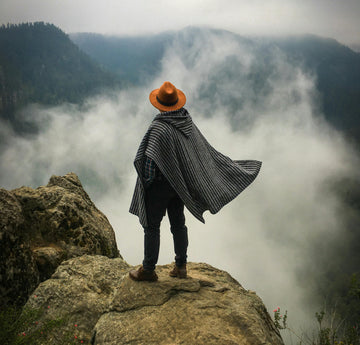The Ultimate Guide to Camping, Mountaineering, and Hiking Gear: Essential Equipment for Every Adventure
by The Adventure Gears on Jun 26, 2024

Whether you’re a seasoned adventurer or just getting started, having the right gear is crucial for a successful and enjoyable outdoor experience. This guide covers everything you need to know about camping stuff, mountaineering gear, and hiking equipment. From essential items to expert tips, we’ve got you covered.
Visit The Adventure Gears to explore our extensive range of high-quality gear designed to enhance your outdoor adventures.
Why Proper Gear Matters
Having the right gear is not just about convenience; it’s about safety, efficiency, and maximizing enjoyment. Here’s why investing in quality gear matters:
- Safety: Proper gear protects you from the elements and potential hazards.
- Comfort: High-quality equipment ensures you stay comfortable throughout your adventure.
- Efficiency: Good gear makes your outdoor activities more efficient and enjoyable.
- Durability: Investing in durable gear means it will last longer and perform better.
Essential Camping Gear
Camping is a great way to connect with nature, but it requires proper preparation. Here’s a detailed look at essential camping gear:
- Shelter: Tents, hammocks, and tarps.
- Sleeping Gear: Sleeping bags, sleeping pads, and pillows.
- Cooking Equipment: Stoves, cookware, and utensils.
- Hydration: Water filters, bottles, and hydration packs.
- Lighting: Lanterns, headlamps, and flashlights.
- Tools: Multi-tools, knives, and repair kits.
- First Aid Kit: Comprehensive first aid supplies.
- Clothing: Weather-appropriate layers and rain gear.
Explore our Camping Gear Collection for high-quality camping essentials.
Detailed Look at Camping Gear
Shelter
Choosing the right shelter is crucial for a comfortable camping experience. Here are some options:
- Tents: Look for lightweight, weather-resistant tents.
- Hammocks: Great for lightweight camping and a good night’s sleep.
- Tarps: Versatile and can be used for additional shelter or ground cover.
Visit our Tents and Shelters for reliable options.
Sleeping Gear
A good night’s sleep is essential for any camping trip. Here’s what you need:
- Sleeping Bags: Choose one appropriate for the season and temperature.
- Sleeping Pads: Provide insulation and comfort.
- Pillows: Compact and comfortable options for camping.
Explore our Sleeping Gear for quality sleeping solutions.
Cooking Equipment
Cooking outdoors can be a rewarding experience with the right equipment. Here’s what to pack:
- Stoves: Portable and efficient camping stoves.
- Cookware: Lightweight pots, pans, and utensils.
- Utensils: Compact and multi-functional utensils.
Check out our Cooking Equipment for everything you need to cook outdoors.
Hydration
Staying hydrated is crucial. Here are some options:
- Water Bottles: Durable and easy to carry.
- Hydration Packs: Convenient for hands-free hydration.
- Water Filters: For purifying water from natural sources.
Visit our Hydration Products for a range of hydration solutions.
Lighting
Good lighting is essential for safety and convenience. Here’s what to pack:
- Lanterns: Provide broad, ambient light.
- Headlamps: Hands-free and adjustable.
- Flashlights: Durable and bright.
Explore our Lighting Options for high-quality lighting gear.
Tools and Repair Kits
Being able to fix gear on the trail is crucial. Here’s what you need:
- Multi-Tools: Versatile tools for various repairs.
- Knives: Essential for food prep and emergencies.
- Repair Kits: For tents, sleeping bags, and clothing.
Check out our Tools and Repair Kits for reliable options.
First Aid Kit
A well-stocked first aid kit is essential. Include these items:
- Bandages and Dressings: For cuts and wounds.
- Medications: Pain relievers, antihistamines, and personal medications.
- Tools: Tweezers, scissors, and safety pins.
- Emergency Supplies: Whistle, emergency blanket, and CPR mask.
Visit our First Aid Kits for comprehensive kits tailored for camping.
Clothing
Choosing the right clothing is essential for comfort and safety. Here are some tips:
- Layering: Use a layering system to regulate body temperature.
- Moisture-Wicking: Choose fabrics that wick moisture away from your skin.
- Insulation: Pack insulating layers for warmth.
- Rain Gear: Waterproof jackets and pants to stay dry.
Check out our Clothing Options for comfortable and weather-appropriate clothing.
Essential Mountaineering Gear
Mountaineering requires specialized gear to ensure safety and success. Here’s a detailed look at essential mountaineering gear:
- Climbing Equipment: Ropes, harnesses, and carabiners.
- Footwear: Mountaineering boots and crampons.
- Protection Gear: Helmets, gloves, and goggles.
- Navigation Tools: Maps, compasses, and GPS devices.
- Shelter: Tents and bivy sacks for high-altitude camping.
- Clothing: Insulated and weatherproof layers.
- Cooking Equipment: Lightweight stoves and cookware.
- Hydration: Water bottles and purification systems.
- First Aid Kit: Comprehensive kit for high-altitude conditions.
- Lighting: Headlamps and flashlights with extra batteries.
Explore our Mountaineering Gear Collection for high-quality equipment.
Detailed Look at Mountaineering Gear
Climbing Equipment
Safety and reliability are paramount when climbing. Here’s what you need:
- Ropes: Dynamic ropes for lead climbing and static ropes for rappelling.
- Harnesses: Comfortable and secure harnesses.
- Carabiners: Locking and non-locking carabiners for various uses.
Visit our Climbing Equipment for reliable options.
Footwear
Proper footwear is crucial for traction and protection. Here’s what to look for:
- Mountaineering Boots: Insulated and waterproof for cold conditions.
- Crampons: Attach to boots for traction on ice and snow.
Explore our Footwear Options for high-quality boots and crampons.
Protection Gear
Staying safe in harsh conditions requires the right protection gear. Here’s what to pack:
- Helmets: Protects from falls and debris.
- Gloves: Insulated and waterproof for warmth and protection.
- Goggles: Protect eyes from wind, snow, and UV rays.
Visit our [Protection Gear](https://www.theadventuregears.com/products/us-army-cp-camouflage-multicam-military-combat-t-shirt-men-tactical-shirt-airsoft-paintball-camping-hunting-clothing) for reliable protective clothing and gear.
Navigation Tools
Navigation is crucial in mountaineering to stay on track and avoid hazards. Here’s what you need:
- Maps: Detailed topographic maps of the area.
- Compasses: Reliable compasses for orientation.
- GPS Devices: Handheld GPS units for precise navigation.
Explore our Navigation Tools for essential navigation equipment.
Shelter
High-altitude camping requires sturdy and reliable shelters. Here’s what to pack:
- Tents: Lightweight and weather-resistant tents.
- Bivy Sacks: Compact shelters for emergencies.
Check out our Shelter Options for quality tents and bivy sacks.
Clothing
Proper clothing is essential for staying warm and dry in extreme conditions. Here’s what to consider:
- Base Layers: Moisture-wicking and quick-drying fabrics.
- Insulation Layers: Down or synthetic insulated jackets.
- Outer Layers: Waterproof and windproof jackets and pants.
Visit our Clothing Section for a range of mountaineering clothing.
Cooking Equipment
Lightweight and efficient cooking gear is essential for high-altitude cooking. Here’s what to pack:
- Stoves: Compact and efficient stoves.
- Cookware: Lightweight pots and pans.
- Utensils: Compact and multi-functional utensils.
Explore our Cooking Equipment for reliable options.
Hydration
Staying hydrated at high altitudes is crucial. Here’s what you need:
- Water Bottles: Insulated bottles to prevent freezing.
- Hydration Systems: Bladders with insulated tubes.
- Water Purifiers: Filters and purification tablets.
Check out our Hydration Products for essential hydration gear.
First Aid Kit
A comprehensive first aid kit tailored for high-altitude conditions is essential. Here’s what to include:
- Bandages and Dressings: For cuts and wounds.
- Medications: Pain relievers, altitude sickness medication, and personal prescriptions.
- Emergency Supplies: Whistle, emergency blanket, and CPR mask.
Visit our First Aid Kits for complete kits.
Lighting
Reliable lighting is essential for safety. Here’s what to pack:
- Headlamps: Powerful and adjustable headlamps.
- Flashlights: Durable and bright flashlights.
- Extra Batteries: Always carry spare batteries.
Explore our Lighting Options for high-quality lighting gear.
Essential Hiking Gear
Hiking is a popular outdoor activity that requires proper preparation and gear. Here’s a detailed look at essential hiking equipment:
- Backpack: Comfortable and spacious backpacks.
- Footwear: Hiking boots and trail shoes.
- Clothing: Moisture-wicking layers and rain gear.
- Navigation Tools: Maps, compasses, and GPS devices.
- Hydration: Water bottles and hydration packs.
- Nutrition: High-energy snacks and meals.
- First Aid Kit: Basic supplies for minor injuries.
- Lighting: Headlamps and flashlights.
- Tools and Repair Kits: Multi-tools and duct tape.
- Sun Protection: Sunglasses, sunscreen, and hats.
- Insect Repellent: Sprays and wipes.
Explore our Hiking Gear Collection for high-quality hiking equipment.
Detailed Look at Hiking Gear
Backpack
A good backpack is essential for carrying all your hiking gear. Here’s what to look for:
- Comfort: Look for padded straps and a ventilated back panel.
- Capacity: Choose a size that fits your needs (daypack vs. multi-day pack).
- Features: Hydration compatibility, multiple compartments, and rain cover.
Visit our Backpacks for a range of options.
Footwear
The right footwear can make or break your hike. Here’s what to consider:
- Hiking Boots: Provide ankle support and protection.
- Trail Shoes: Lightweight and comfortable for shorter hikes.
- Socks: Moisture-wicking and cushioned socks.
Explore our Footwear Options for high-quality hiking boots and shoes.
Clothing
Proper clothing is essential for comfort and safety. Here’s what to pack:
- Base Layers: Moisture-wicking and quick-drying fabrics.
- Insulating Layers: Fleece or down jackets.
- Outer Layers: Waterproof and windproof jackets and pants.
Check out our Clothing Section for a range of hiking clothing.
Navigation Tools
Staying on track is crucial for a successful hike. Here’s what you need:
- Maps: Detailed maps of the hiking area.
- Compasses: Reliable compasses for orientation.
- GPS Devices: Handheld GPS units for precise navigation.
Explore our Navigation Tools for essential navigation equipment.
Hydration
Staying hydrated is key to a successful hike. Here’s what to pack:
- Water Bottles: Durable and easy to carry.
- Hydration Packs: Convenient for hands-free hydration.
- Water Filters: For purifying water from natural sources.
Visit our Hydration Products for essential hydration gear.
Nutrition
Proper nutrition keeps your energy levels up. Here’s what to pack:
- High-Energy Snacks: Nuts, dried fruits, and energy bars.
- Meals: Lightweight, easy-to-prepare meals for longer hikes.
- Electrolytes: Supplements to replenish lost minerals.
Explore our Nutrition Section for a variety of hiking snacks and meals.
First Aid Kit
A well-stocked first aid kit is essential for handling minor injuries. Here’s what to include:
- Bandages and Dressings: For cuts and wounds.
- Medications: Pain relievers, antihistamines, and personal medications.
- Tools: Tweezers, scissors, and safety pins.
Visit our First Aid Kits for comprehensive kits.
Lighting
Good lighting is essential for safety and convenience. Here’s what to pack:
- Headlamps: Hands-free and adjustable.
- Flashlights: Durable and bright.
- Extra Batteries: Always carry spares.
Explore our Lighting Options for high-quality lighting gear.
Tools and Repair Kits
Being able to fix gear on the trail is crucial. Here’s what you need:
- Multi-Tools: Versatile tools for various repairs.
- Duct Tape: For quick fixes.
- Repair Kits: For tents, sleeping bags, and clothing.
Check out our Tools and Repair Kits for reliable options.
Sun Protection
Protecting yourself from the sun is crucial. Here’s what to pack:
- Sunglasses: UV-protective lenses.
- Sunscreen: Broad-spectrum SPF.
- Hats: Wide-brimmed hats for shade.
Internal Links to Explore More
For more information on our products and to explore our extensive range of hiking gear, check out these links:
- Solar Camping Shower Bag: Perfect for maintaining hygiene on long hikes.
- First Aid Kit: Essential for handling emergencies on the trail.
- 40L Hiking Backpack: Spacious and durable for carrying all your essentials.
- Multi-Tool: Versatile and compact for various repairs and tasks.
- Winter Warm Underwear: Stay warm and comfortable on your hike.
Choosing Between New and Used Gear
When it comes to purchasing gear, you have the option of buying new or used. Here’s a look at the pros and cons of each:
New Gear
Pros:
- Warranty: New gear often comes with a warranty, providing peace of mind.
- Latest Technology: New products feature the latest advancements in technology and design.
- Condition: Guaranteed to be in perfect condition, with no wear and tear.
Cons:
- Cost: New gear is usually more expensive than used gear.
- Depreciation: New gear loses value as soon as it’s used.
Used Gear
Pros:
- Cost Savings: Used gear is typically much cheaper than new gear.
- Sustainability: Buying used reduces waste and is better for the environment.
- No Depreciation: Used gear doesn’t lose value as quickly as new gear.
Cons:
- Condition: Used gear may have wear and tear or hidden damage.
- No Warranty: Most used gear doesn’t come with a warranty.
- Limited Selection: Availability can be limited to what others are selling.
Where to Buy Outdoor Gear
There are various places to buy outdoor gear, each with its own advantages:
- Specialty Stores: Offer expert advice and a wide range of high-quality products.
- Online Retailers: Provide convenience and often have customer reviews.
- Second-Hand Shops: Great for finding used gear at lower prices.
- Gear Swaps: Community events where you can buy, sell, or trade gear with others.
Maintaining Your Gear
Proper maintenance ensures your gear lasts longer and performs better. Here are some tips:
- Clean Regularly: Clean your gear after each use to prevent dirt and grime buildup.
- Store Properly: Store gear in a cool, dry place to prevent damage.
- Inspect Frequently: Regularly inspect gear for signs of wear and tear.
- Repair When Needed: Fix any damage promptly to avoid further issues.
Eco-Friendly Gear Options
Choosing eco-friendly gear is a great way to reduce your environmental impact. Here are some options:
- Sustainable Materials: Look for gear made from recycled or sustainable materials.
- Eco-Friendly Brands: Support brands that prioritize environmental responsibility.
- Minimal Packaging: Choose products with minimal or recyclable packaging.
Conclusion
Whether you’re camping, mountaineering, or hiking, having the right gear is essential for a safe and enjoyable outdoor adventure. By investing in quality equipment and following the tips outlined in this guide, you can ensure you’re well-prepared for any adventure. Remember to consider your specific needs, maintain your gear, and prioritize eco-friendly options when possible.
For more insights and to explore our range of outdoor gear and equipment, visit The Adventure Gears. Don’t forget to check out our Solar Camping Shower Bag, First Aid Kits, and 40L Hiking Backpack for specialized benefits.




